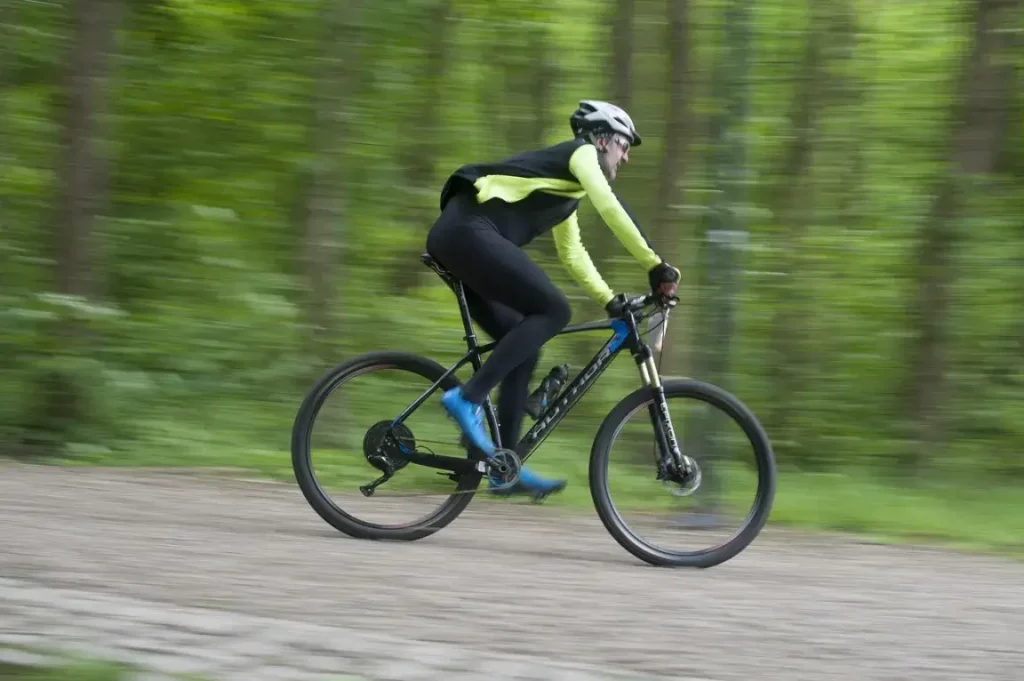Mountain Bike speed, Mountain biking is an exhilarating sport that combines adrenaline-pumping descents and challenging uphill climbs. Whether you’re a beginner or an experienced rider, one question that often comes to mind is, “How fast can a mountain bike go?” The answer is not straightforward, as several factors come into play. In this article, we’ll explore what determines the speed of a mountain bike, the factors affecting its speed, and how you can increase your bike’s velocity for an even more thrilling ride.
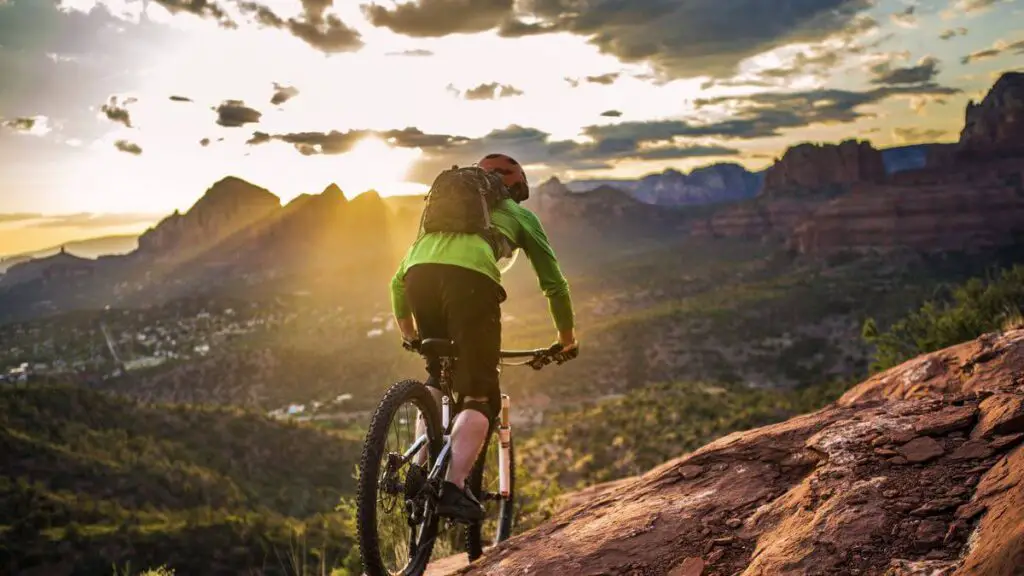
What Determines the Mountain Bike Speed?
To understand the speed capabilities of a mountain bike, it’s essential to consider the various factors that influence its performance. These factors include:
Factors Affecting the Mountain Bike speed
Terrain: The type of terrain you ride on greatly impacts your mountain bike’s speed. Smooth, well-paved surfaces allow for faster speeds, while technical trails with steep descents or tight corners may require more caution and slower speeds.
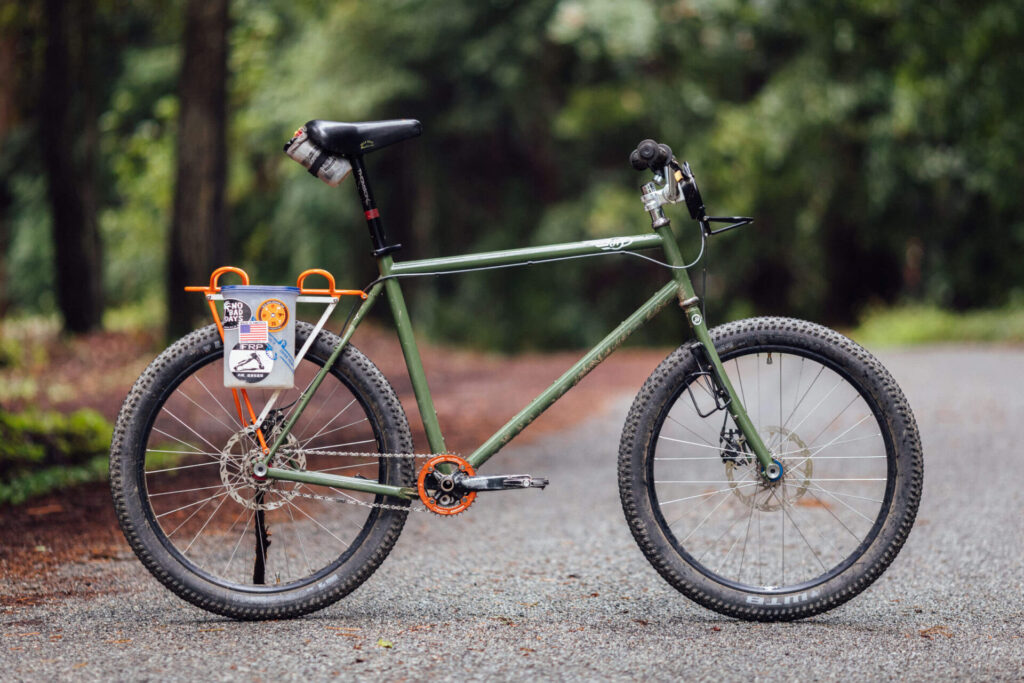
Rider’s Skill and Fitness: The rider’s skill level and physical fitness play a significant role in determining the speed of a mountain bike. Experienced riders who possess excellent bike handling skills and cardiovascular endurance can achieve higher speeds compared to beginners.
Bike Specifications: The design and specifications of your mountain bike contribute to its speed capabilities. Factors such as the frame material, weight, wheel size, and drivetrain efficiency all affect how fast your bike can go.
Tire Pressure: The tire pressure of your mountain bike affects its rolling resistance. Higher tire pressures generally result in faster speeds on smooth surfaces, while lower pressures provide better traction and control on rough terrains.
Suspension: Mountain bikes are equipped with suspension systems to absorb impacts and improve comfort. However, the suspension setup can influence speed. A well-tuned suspension can maintain traction and stability at higher speeds, enhancing overall performance.
Gear Ratio: The gear ratio you choose plays a vital role in determining your mountain bike’s speed. Higher gear ratios provide more top-end speed but require more effort to pedal, while lower gear ratios offer easier pedaling at the expense of top speed.
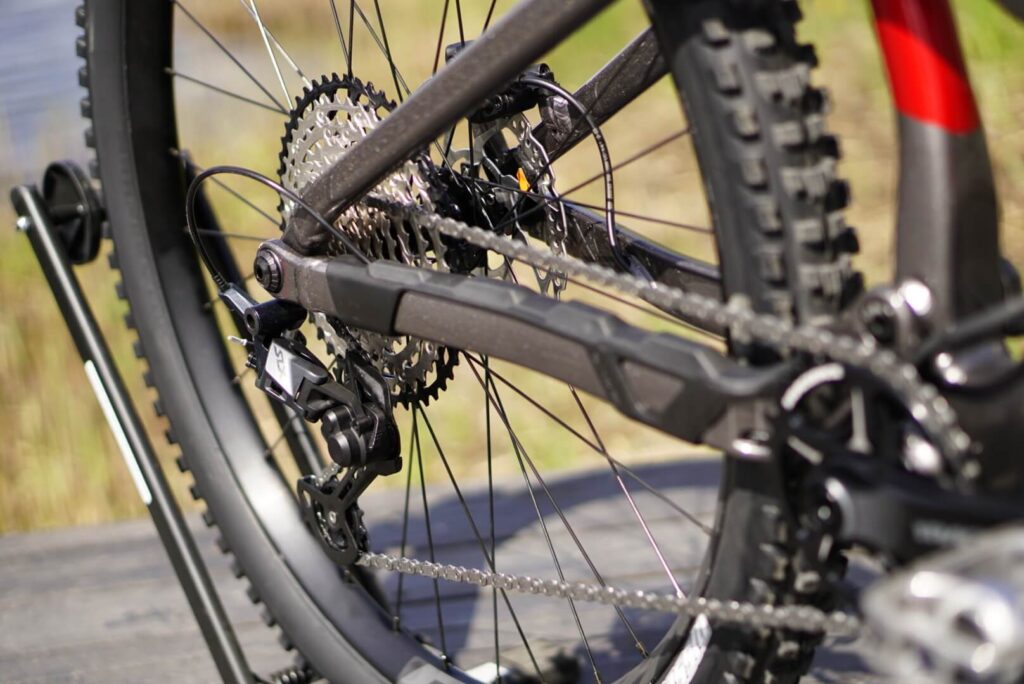
Aerodynamics: Although mountain bikes are not designed with aerodynamics as the primary focus, certain factors like body position, helmet choice, and clothing can affect wind resistance and, consequently, speed.
The Maximum Mountain Bike speed
The maximum speed of a mountain bike depends on various factors, including the rider’s skill, terrain conditions, bike specifications, and external factors like wind resistance. While it’s difficult to provide an exact figure for the maximum speed, experienced riders can reach impressive velocities on suitable terrain.
On average, skilled mountain bikers can achieve speeds ranging from 25 to 35 miles per hour on flat surfaces or gentle descents. However, it’s important to note that these speeds can vary significantly based on individual factors and riding conditions.
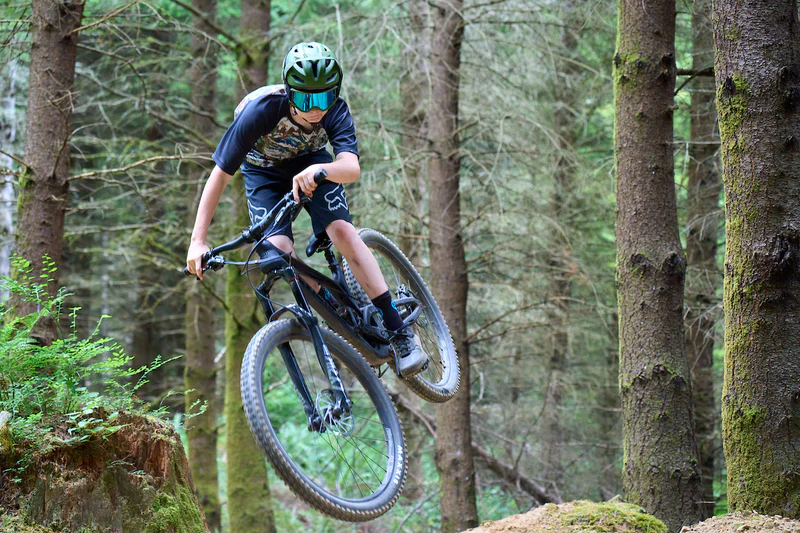
Downhill mountain biking, with its steep descents and gravity-assisted momentum, allows riders to reach even higher speeds. Professional downhill racers can exceed speeds of 40 miles per hour on well-designed downhill courses.
It’s crucial to prioritize safety when attempting high Mountain Bike Speed. Riders should always wear appropriate safety gear, including helmets, knee and elbow pads, and gloves, to protect themselves in the event of a fall or crash. Additionally, maintaining control and being aware of one’s surroundings is vital when riding at high speeds to mitigate risks.
Downhill Mountain Biking & Speed
What’s the average speed dowhilling among competitive riders?
- The average speed is ≈ 17 mph (27 kph) with peak speeds upwards of 30 mph (48 kph) during downhill mountain bike riding.
Downhill mountain biking is an exhilarating and adrenaline-fueled sport that attracts thrill-seekers and biking enthusiasts alike. When it comes to speed, downhill mountain biking takes it to a whole new level. Riders descend steep slopes, navigate challenging obstacles, and push the limits of their bikes and skills.
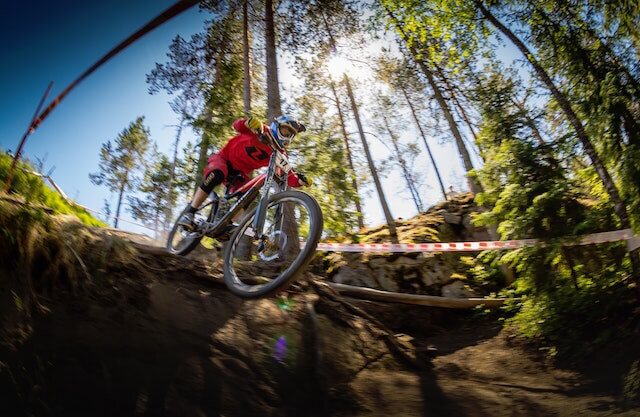
In downhill mountain biking, speed is a fundamental aspect. Riders strive to achieve mind-boggling velocities as they navigate the twists and turns of technical downhill trails. While there is no definitive answer to how fast a downhill mountain bike can go, it is not uncommon for riders to reach speeds of 40 miles per hour or even higher.
Several factors contribute to the high speeds achievable in downhill mountain biking. Firstly, the design and components of downhill bikes are specifically optimized for speed and performance. These bikes feature long-travel suspension systems, robust frames, and powerful disc brakes that enable riders to tackle rough terrain while maintaining control at high velocities.
How to Increase the Mountain Bike Speed
If you’re looking to push the limits of your Mountain Bike speed, there are several strategies you can employ:
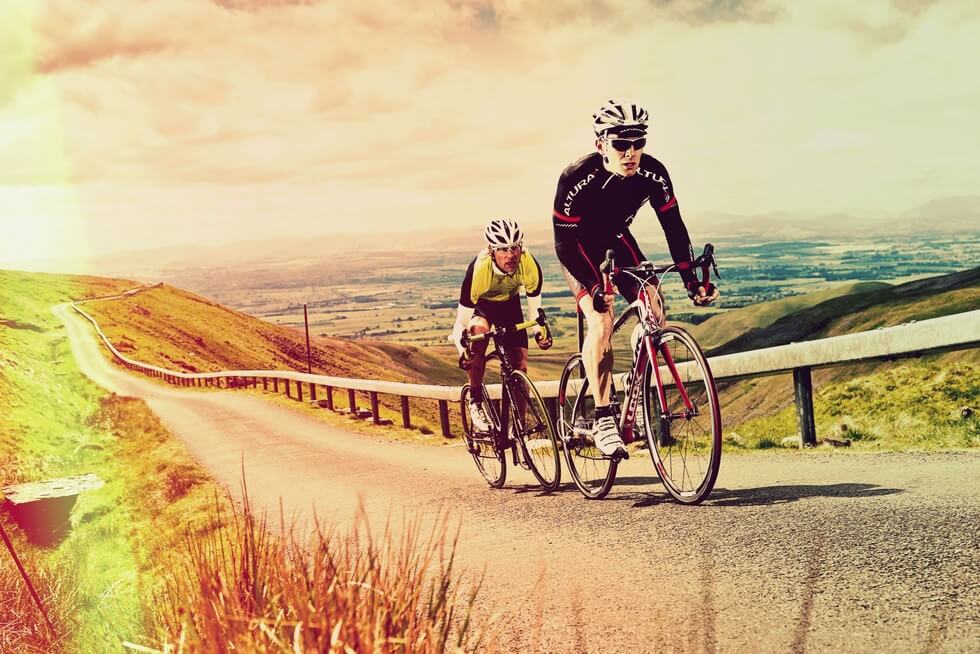
- Improve Your Fitness: Enhancing your cardiovascular endurance and strength through regular exercise and training will enable you to pedal harder and maintain higher speeds for longer durations.
- Optimize Bike Components: Upgrading certain components of your mountain bike can improve its overall performance. Consider investing in lighter and more aerodynamic parts, such as carbon fiber frames, streamlined handlebars, and efficient drivetrains.
- Choose the Right Gear: Selecting the appropriate gear for different terrain and riding conditions is crucial. Utilizing higher gear ratios on flatter sections and lower ratios for steep inclines can help maximize your speed and pedaling efficiency.
- Maintain Your Bike: Keeping your mountain bike in optimal condition is essential for achieving higher speeds. Regularly clean and lubricate the drivetrain, ensure the brakes are functioning properly, and check tire pressure before each ride.
- Improve Riding Technique: Enhancing your riding technique can significantly impact your speed. Learning proper body positioning, mastering cornering techniques, and maximizing pedal efficiency through techniques like “pumping” can help you maintain momentum and increase overall speed.
FAQs
What is the average speed of a mountain bike?
The average speed of a mountain bike varies depending on several factors such as terrain, rider skill, and fitness level. On average, mountain bikers can maintain speeds ranging from 8 to 20 miles per hour.
Can a mountain bike go as fast as a road bike?
Generally, mountain bikes are not designed for achieving the same top speeds as road bikes. Road bikes are built for efficiency and speed on smooth pavement, while mountain bikes prioritize off-road capabilities and handling over pure speed.
How can I improve my mountain biking speed?
To improve your mountain biking speed, focus on improving your fitness level, optimizing your bike’s components, selecting the right gear for different terrains, maintaining your bike properly, and enhancing your riding technique through practice and skill development.
Is it safe to ride a mountain bike at high speeds?
Riding a mountain bike at high speeds can be exhilarating but also carries inherent risks. It’s crucial to ride within your skill level, wear appropriate safety gear, and be mindful of the trail conditions and obstacles to ensure your safety.
Are there any speed limits for mountain biking?
Speed limits for mountain biking are not typically enforced on off-road trails. However, it’s essential to adhere to local trail rules and regulations, respect other trail users, and ride responsibly to ensure a safe and enjoyable experience for everyone.
Conclusion
Mountain biking offers a thrilling adventure on two wheels, and the speed at which you can ride depends on various factors, including terrain, rider skill, bike specifications, and more. While the average speeds for mountain biking may not match those of road biking, the challenges and technical aspects of off-road riding make it a unique and exciting experience. Remember, the focus should not solely be on speed, but rather on enjoying the journey and exploring nature’s wonders.
